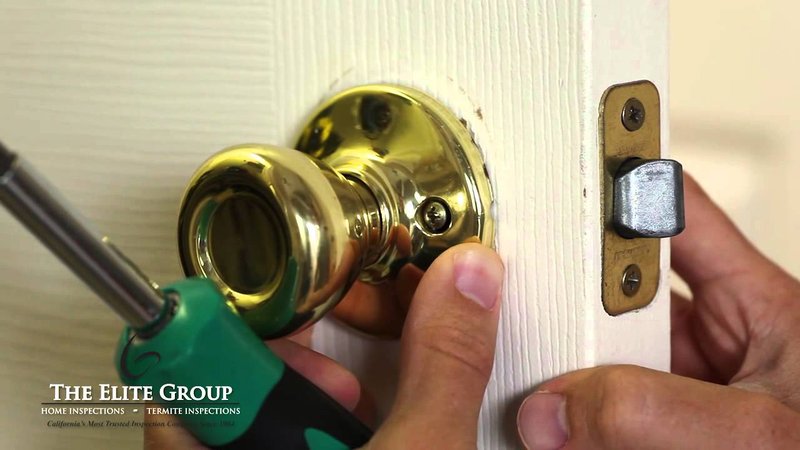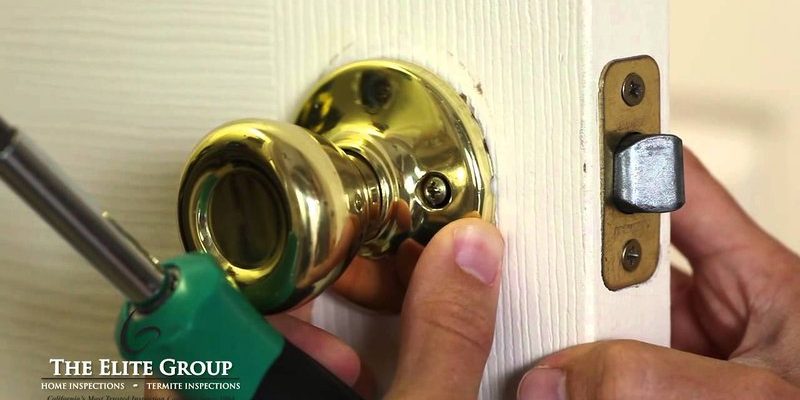
In this guide, we’ll walk through the steps to fix a sticking door latch caused by a bent part. Don’t worry if you’re not a DIY expert; I’ll break it down simply. Armed with some basic tools and a little patience, you’ll be able to get your door swinging freely again. Let’s dive in!
Identifying the Problem
Before we jump into fixing the latch, it’s essential to understand what’s causing it to stick. A sticking latch usually results from a bent component, often in the latch itself or its surrounding hardware. Look for signs like the latch not engaging smoothly or catching on the door frame.
To identify the issue, first, take a close look at the door. Is there any visible misalignment? Gently press the latch with your finger to see how it responds. If it feels stiff or stuck, you might just have a bent piece of metal at play. This happens more often than you’d think, especially in older doors or those exposed to heavy use.
You might be wondering about the specific components at work here. The latch has several parts: the bolt, the strike plate, and the latch itself. If any of these are bent, it can cause the latch to misalign and stick. Knowing this helps you target the issue precisely.
Gathering Your Tools
Now that you’ve pinpointed the problem, it’s time to gather your tools. You won’t need anything too fancy—just some simple items you likely already have at home. Here’s a quick list:
- Flathead screwdriver
- Phillips screwdriver
- Pliers
- File or sandpaper
- Lubricant (like WD-40)
Having the right tools makes a world of difference. As you gather them, think of it like prepping for a cooking project; you want everything at your fingertips to make the process smooth.
Once you have your tools ready, you can set aside about 30 minutes to an hour for this project—more than enough time to get your door back in working order.
Removing the Door Latch
With your tools in hand, the next step is to remove the latch. This process is typically straightforward, but take your time to avoid causing any additional damage. Here’s how to do it:
1. Unscrew the latch plate: Use your Phillips screwdriver to remove the screws from the latch plate on the edge of the door. Set them aside in a small container so they don’t roll away.
2. Take out the latch mechanism: Once the plate is off, gently pull the latch out from the door. If it’s stuck, a bit of wiggling might be necessary, but be careful not to use excessive force.
Be sure to keep track of the parts as you go along. It’s like taking apart a piece of furniture; knowing where everything is helps when it’s time to put it back together.
Inspecting for Damage
Now that the latch is out, take a good look at it. Is there any visible bending? Pay close attention to the bolt and the latch itself. These are the components that typically get misaligned. If the latch looks bent, you’ll want to straighten it before reinstalling.
If you’re unsure what to look for, think of it like inspecting a bicycle for a flat tire. You need to examine every component closely to find the source of the issue. Use your pliers to gently bend any parts back into shape if they’re warped. But be careful—too much pressure can break the latch.
In some cases, if the damage is severe, it might be more beneficial to replace the latch entirely. Replacing a latch can often be a straightforward task, but fix it if you can.
Straightening the Bent Component
If you’ve found a bent component, the next step is to straighten it. Here’s how:
– Use pliers for gentle adjustments: Grip the bent area firmly but don’t squeeze too hard. Gradually bend it back into place. Think of this like trying to straighten a bent paperclip—patience is key!
– File any sharp edges: After straightening, check for any sharp edges that may have formed. Use a file or sandpaper to smooth them out. You don’t want these edges to catch on the door when you reinstall it.
Once you’ve made the adjustments, test the latch again. It should move more freely now. If it still feels sticky, you may need to adjust the surrounding hardware or consider replacing the latch.
Lubricating the Latch
After straightening the bent component, it’s crucial to lubricate the latch. This step helps ensure smooth operation. Here’s how to do it:
– Apply lubricant: Use a small amount of WD-40 or another suitable lubricant on the moving parts of the latch. A little goes a long way, so don’t overdo it. Apply it directly to the bolt and the latch mechanism.
– Work it in: Open and close the latch several times. This helps spread the lubricant evenly, reducing friction. It’s like greasing a squeaky wheel; the more you use it, the smoother it gets.
Be aware that lubrication is an ongoing maintenance task. Regularly checking and reapplying lubricant can prevent future sticking issues.
Reinstalling the Latch
With the latch prepped and ready, it’s time to put everything back together. Follow these steps:
1. Insert the latch back into the door: Carefully fit the latch mechanism back into the opening where it was removed. Make sure it aligns correctly with the hole in the door.
2. Attach the latch plate: Line up the latch plate with the screw holes and secure it using the screws you set aside. Make sure it’s snug, but don’t overtighten—this could cause more bending.
Once you’ve reinstalled it, give the latch a few test runs to ensure it moves smoothly. This is the moment of truth! If it sticks again, you might need to go back and check for additional misalignments.
Final Thoughts
Fixing a door latch that’s sticking due to a bent component might feel daunting at first, but it’s a manageable task with the right approach. You’ve learned to identify the problem, gather your tools, and make necessary adjustments. By taking it step by step, you can restore your door’s function without too much hassle.
Remember, regular maintenance is key to keeping your door operating smoothly. Keep an eye on the latch, lubricate it periodically, and address any signs of wear early. With just a little bit of proactive care, you can enjoy a smoothly operating door for years to come!
